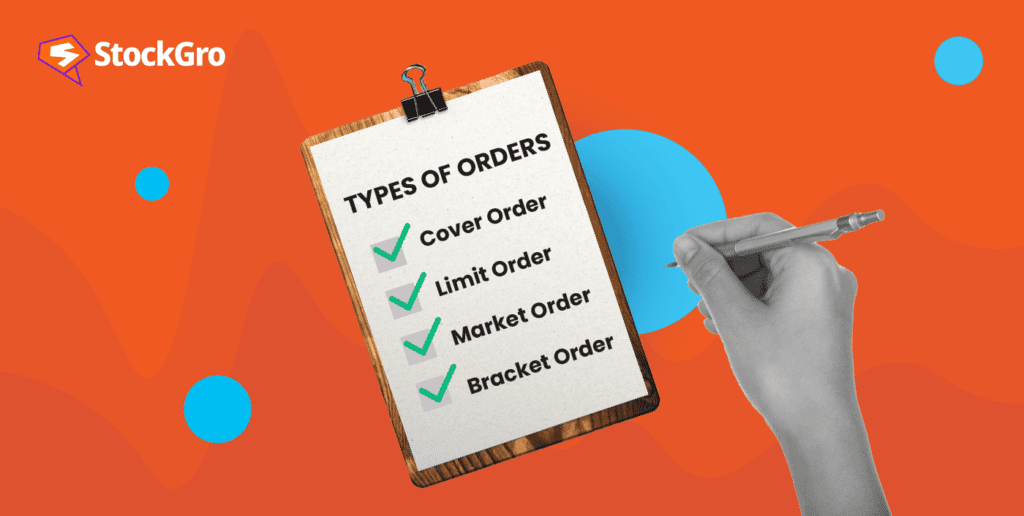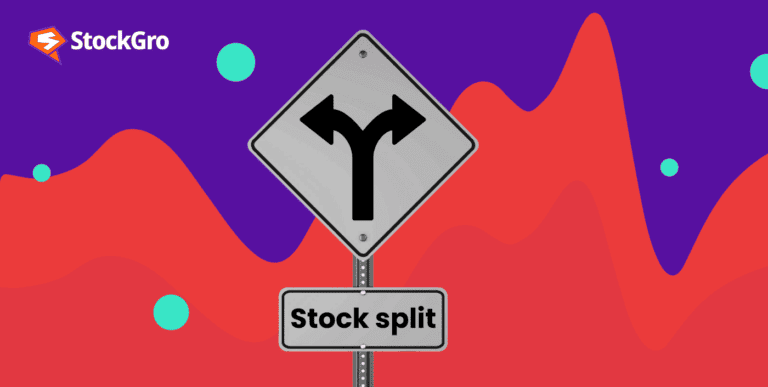
The stock market is a different world in itself. It is a home to diverse kinds of financial assets offering varied features and benefits to investors. All kinds of investors and traders begin the process of trading by placing trade orders.
In this article, we will discuss the different stock market order types, their features, benefits and how one order varies from the other.
You may also like: What is swing trading?
What is a stock market order?
An order in the stock market is the first step to trade. It is a command to begin the execution of a trade.
An investor interested in buying the asset places an order to buy, and the seller places an order to sell. Once the buy and sell orders match, the trade gets executed.
Exploring the Different Types of Stock Market Orders
Market order
You may already know what a market order is. It is one of the most basic and popular order types in the share market. Market orders are placed by investors looking for immediate execution of trade at current market prices.
Shares are bought at bid or near to bid price and sold at ask or near to ask price by traders.
Bid price – The highest price to buy a stock.
Ask price – The lowest price to sell a stock.
Limit order
A limit order is where the trade price has a limit. The order is executed only if the stock prices reach that limit. If the stock does not reach the defined price level, the limit order fails. It is, therefore, an indication of the amount a trader is willing to spend on a share.
For example, an investor who wants to buy shares of Company ABC can set a limit order to buy it when the price comes below ₹ 10. If the price reduces below ₹ 10, the order is executed.
What is a limit price in trading?
The buy or sell limit order price is the minimum or maximum amount of money an investor is ready to spend to trade an asset. It is the most essential component of limit orders.
The difference between a market order and a limit order is the time and price of execution. While market orders take place on the spot at current market prices, limit orders take place on a future date at the spot price, provided the price is within the limit. A limit order offers more control to investors than market orders.
Also Read: What is expiry day trading?
Stop order
A stop order is similar to a limit order, which sets the limit to buy or sell a stock. The main difference between the two is that the stop order is not visible to the public and automatically gets triggered when a share reaches the set price, whereas, a limit order will be visible to the public and should be matched with an opposite party for execution. The stop and limit orders help investors in controlling losses.
Day order
A day order can be any order like market, limit, stop, etc., with an additional condition of executing it on the same day. If day orders do not get executed on the same day, they expire.
Good till cancelled (GTC) and Good till triggered (GTT)
These are trading order types based on the validity period. Good till cancelled orders are the opposite of day orders. While day orders expire in a day, the GTC orders are open till execution or cancellation. Such orders usually remain active for up to 90 days.
Good till triggered orders include a feature of the limit order. A limit price is set for shares and the broker triggers the order once the share reaches the limit price. GTT orders are valid for up to one year, after which they expire in case of non-execution.
Immediate or cancel (IoC)
An IoC order is a market order with a short execution window. The order must get executed immediately, or else it will get cancelled. If an order gets partially fulfilled, the remaining portion will get cancelled. Such orders help investors during market volatility when prices move rapidly.
- All or none (AoN)
An order type where the entire order must get executed. If it does not, the whole order gets cancelled. This order is unlike IoC and does not allow partial fulfilment.
- Fill or Kill (FoK)
A fill-or-kill order is a blend of IoC and AoN. So, an order must be executed immediately and completely. Otherwise, the order gets cancelled.
While these are some common orders, the stock market and brokerage firms offer many different kinds of orders with slight alterations to the above features.
Also Read: The value add of exotic options trading
Bottomline
The knowledge of different order types and their features is essential for investors as it will help investors decide the type of order that suits their financial goal the best.
For example, an investor whose objective is immediate execution should look for IoC or market orders. Similarly, an investor who wants to control losses should try placing limit or stop orders. So, it is fundamental for investors to understand how stock market orders work.
FAQs
How does a limit order work in the stock market?
A limit order instructs to buy or sell a stock at a specific price or better, ensuring the desired price but not guaranteeing execution if the market doesn’t reach that level.
What is the difference between a market order and a limit order?
A market order executes immediately at the current market price, prioritizing speed over price control. In contrast, a limit order sets a specific price for execution, ensuring price but not execution certainty.
When should I use a stop-loss order?
A stop-loss order should be used to limit potential losses or protect gains by triggering a market sell order if a stock’s price falls to a predetermined level.
What is a stop-limit order, and how does it work?
A stop-limit order combines a stop order and a limit order; once the stop price is reached, it becomes a limit order to buy or sell at the specified price or better, offering price control but not execution certainty.
What is a market-on-close order, and when should it be used?
A market-on-close order is executed at the market’s closing price, ensuring execution at the final price of the trading day, and is typically used when aiming to trade at the day’s closing price.

